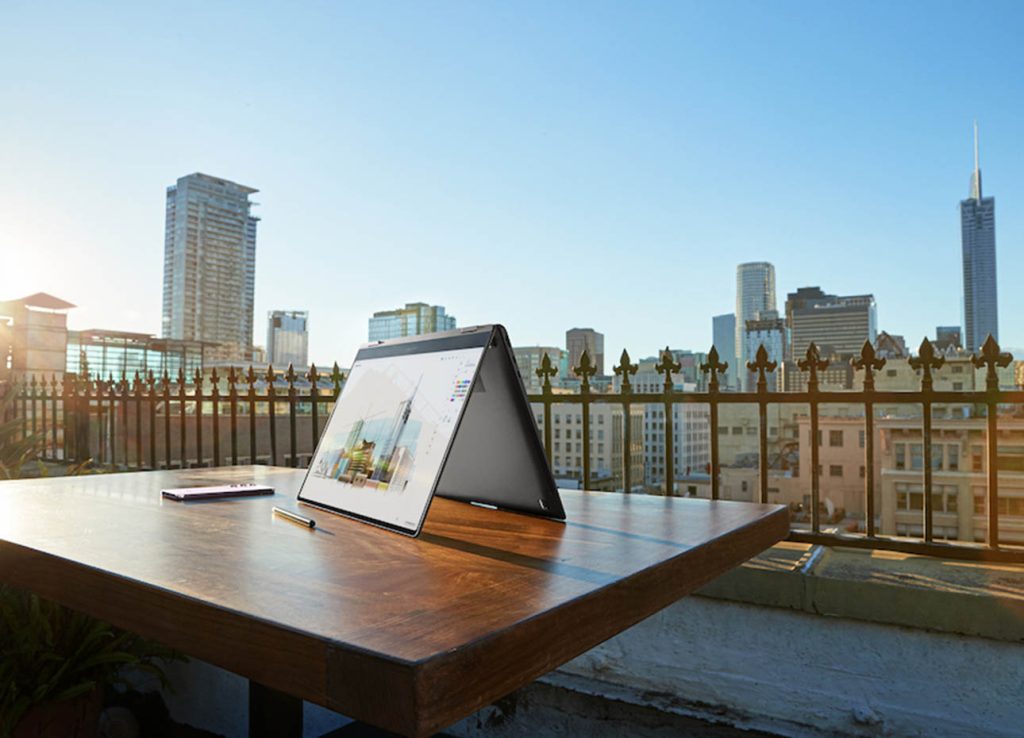
Choosing the Perfect Laptop: Balancing Performance vs. Portability
In the ever-evolving landscape of technological innovation, laptops have become quintessential tools that seamlessly integrate into our daily lives. They serve as portable workstations, entertainment hubs, and educational aids, empowering users with versatility and flexibility in various spheres.
The advent of laptops revolutionized the way we work, learn, and communicate, enabling us to transcend spatial constraints and fostering a digital era characterized by connectivity and productivity. However, in the expansive market of portable computing devices, users are frequently confronted with a fundamental conundrum: the trade-off between performance and portability.
This perennial dilemma remains at the forefront of users’ minds when scouting for the perfect laptop, amplifying the significance of striking an optimal balance between these contrasting yet equally crucial attributes. On one hand, there are laptops meticulously engineered for sheer performance, equipped with cutting-edge processors, dedicated graphics, and vast storage capacities to handle resource-intensive tasks with unparalleled efficiency.
Yet, juxtaposed against these powerhouses are the sleek, featherweight champions of portability. These laptops boast slender profiles, extended battery lives, and lightweight designs catering to the on-the-go lifestyle, making them an ideal companion for frequent travelers, students, and professionals alike.
The significance of this balance cannot be overstated. For some, robust performance takes precedence, fueling their need for a laptop that flawlessly executes complex tasks, be it high-resolution video editing, graphic design, or gaming. Conversely, others prioritize mobility, craving a device that seamlessly fits into their lifestyle, effortlessly accompanying them from boardrooms to coffee shops, and from flights to lecture halls.
As the boundaries between work and leisure continue to blur, finding the perfect harmony between performance and portability becomes an indispensable quest. The nuances of this decision-making process delve deep into individual preferences, usage patterns, and the specific demands of various professions and interests.
Understanding Performance and Portability
Defining Performance
The Anatomy of Performance: A laptop’s performance is a culmination of various key components, each playing a pivotal role in its functionality and capabilities.
Processor (CPU): Often considered the laptop’s brain, the processor’s speed and core count significantly impact performance. High-performance CPUs, like Intel Core i9 or AMD Ryzen 9 series, excel in multitasking and heavy-duty applications.
RAM (Random Access Memory): RAM dictates the laptop’s ability to handle multiple tasks simultaneously. Larger RAM capacities, such as 16GB or 32GB, enhance multitasking efficiency, ideal for resource-intensive tasks like video editing or virtualization.
Graphics (GPU): For gaming, design, and multimedia tasks, dedicated graphics cards, such as NVIDIA GeForce RTX or AMD Radeon RX series, provide superior rendering and accelerate graphical processes.
Storage: SSDs (Solid State Drives) offer faster read/write speeds than traditional HDDs, contributing to quicker boot times and application launches. Larger storage capacities ensure ample space for files, software, and media.

Performance in Usage Scenarios: These components cater to different usage scenarios:
Gaming: High-performance CPUs and GPUs are essential for running graphically demanding games smoothly.
Content Creation: Tasks like video editing, graphic design, and 3D modeling require substantial RAM, powerful processors, and dedicated graphics for optimal performance.
Business Tasks: Everyday office tasks benefit from a balance between CPU performance and sufficient RAM to ensure smooth multitasking.
Evaluating Portability
The Parameters of Portability: Portability in laptops encompasses various factors that influence mobility and convenience.
Weight: A lightweight laptop, typically under 3-4 pounds, enhances portability, especially for users frequently on the move.
Size and Form Factor: Smaller form factors, such as 13-inch or 14-inch displays, offer greater portability without compromising usability.
Battery Life: Longer battery life, often exceeding 8-10 hours, ensures uninterrupted usage, particularly when access to power outlets is limited.
Impact on Mobility: Portability factors influence a laptop’s suitability for travel, commuting, or flexible work environments.
Performance-Oriented Laptops
High-Performance Specifications
Powerhouses of Performance: Performance-oriented laptops showcase top-tier specifications catering to demanding tasks.
Processors: Equipped with high-end CPUs like Intel Core i9 or AMD Ryzen 9 series, these laptops excel in computational power.
Dedicated Graphics: These laptops integrate dedicated GPUs like NVIDIA RTX or AMD Radeon RX series, ensuring seamless graphics rendering.
Ample RAM and Storage: Offering substantial RAM (16GB, 32GB, or more) and sizable SSD storage (512GB, 1TB, or higher), they meet the requirements of resource-intensive applications.
Trade-Offs in Portability
Sacrifices for Performance: Emphasizing performance often comes at the expense of portability.
Weight and Bulkiness: These laptops tend to be heavier (5 pounds or more) and bulkier due to robust hardware components.
Reduced Battery Life: Intensive components consume more power, resulting in shorter battery life, typically around 4-6 hours.
Portable Laptops
Emphasis on Mobility
Design and Portability: Portable laptops prioritize lightweight construction and sleek designs for increased mobility. Models with 13-inch or 14-inch screens, such as ultrabooks, feature thin profiles and weigh around 2-4 pounds, making them ideal for travelers and students seeking convenience and ease of use.
Extended Battery Life: These laptops offer longer battery endurance, often exceeding 8-10 hours on a single charge. This extended battery life ensures uninterrupted productivity and entertainment, particularly when access to power sources is limited.
Compromises in Performance
Reliance on Integrated Graphics: Portable laptops primarily utilize integrated graphics, which, while efficient for everyday tasks, struggle with demanding graphical applications or gaming. They lack the power of dedicated GPUs, impacting performance in graphics-intensive activities.
Processing Power and Storage Limitations: Their focus on portability often leads to compromises in processing power and storage capacity. These laptops generally feature lower-powered CPUs and smaller SSD capacities, limiting their ability to handle resource-heavy tasks or store large files.
Finding the Balance
Hybrid Solutions
Striking a Balance: Hybrid laptops attempt to bridge the gap between performance and portability by integrating mid-range specifications. They often feature a compromise between a decent CPU, moderate RAM, and sufficient storage capacity while maintaining a lightweight design. These laptops aim to deliver a balanced user experience suitable for various tasks without compromising on mobility.
User-Centric Approach
Assessing Individual Needs: The ideal choice between performance and portability hinges on users’ specific requirements and preferences. Understanding one’s usage patterns, whether it’s for gaming, content creation, business tasks, or casual browsing, is vital in choosing the right laptop. Additionally, considering priorities like weight, battery life, and performance preferences helps align the laptop’s features with the user’s needs.
Case Studies and User Experiences
Performance-Centric Laptops:
Case Study 1: John, a video editor, opted for a high-performance laptop with a powerful processor and dedicated GPU. Despite its weight and limited battery life, he praised its ability to swiftly render videos and handle editing software.
Case Study 2: Sarah, a gamer, invested in a gaming laptop with robust specs. She found it immersive for gaming but noted its bulkiness and shorter battery life as limiting factors for portability.

Portable Laptops:
Case Study 3: Lisa, a frequent traveler, chose an ultrabook for its lightweight design and extended battery life. She valued its portability during flights and meetings but found its limitations in handling heavy software for photo editing.
Case Study 4: Mark, a student, found a slim and portable laptop convenient for his studies. Although it lacked power for some software, its mobility made it perfect for carrying to classes.
Technical Insights and Comparisons
Performance-Centric vs. Portable Laptops:
Processor and Graphics: High-performance laptops excel in CPU power and dedicated graphics, whereas portable ones rely on integrated GPUs and less powerful CPUs.
RAM and Storage: Performance laptops often offer higher RAM and storage capacities, whereas portable ones compromise with less to maintain their lightweight design.
Battery Life and Weight: Portable laptops shine in extended battery life and lightweight build, while performance laptops tend to be heavier and offer shorter battery endurance.
Real-World Usage:* Benchmarks may favor performance laptops, but in practical usage, portables showcase convenience, especially for on-the-go tasks.
Decision-Making Strategies
Tips for Choosing
Define Usage Priorities: Identify the primary purpose – gaming, content creation, business, or mobility for travel or studies – to streamline your selection process.
Assess Performance Needs: Gauge the level of processing power and GPU requirements for your tasks. Heavy software or gaming may demand higher specs.
Evaluate Portability: Consider your mobility requirements. If frequent travel or portability is crucial, prioritize lightweight and longer battery life.
Balancing Price and Features: Determine a budget range while ensuring it aligns with the desired specifications. Consider mid-range options for a balanced approach.
Research and Reviews: Dive into user reviews, expert opinions, and comparative analyses to gather insights into the laptops that fit your criteria.
Striking the Balance
The choice between performance and portability is pivotal, yet challenging. Striking the right balance involves understanding your unique needs. For tasks demanding robust processing and graphics capabilities, opt for performance-driven laptops. However, for frequent travel or convenience during daily activities, lean towards portable laptops.
By leveraging this insight and adopting a user-centric approach, individuals can navigate the vast array of available laptops to find the perfect blend of power and mobility that suits their lifestyle, ensuring a seamless computing experience tailored to their preferences.

